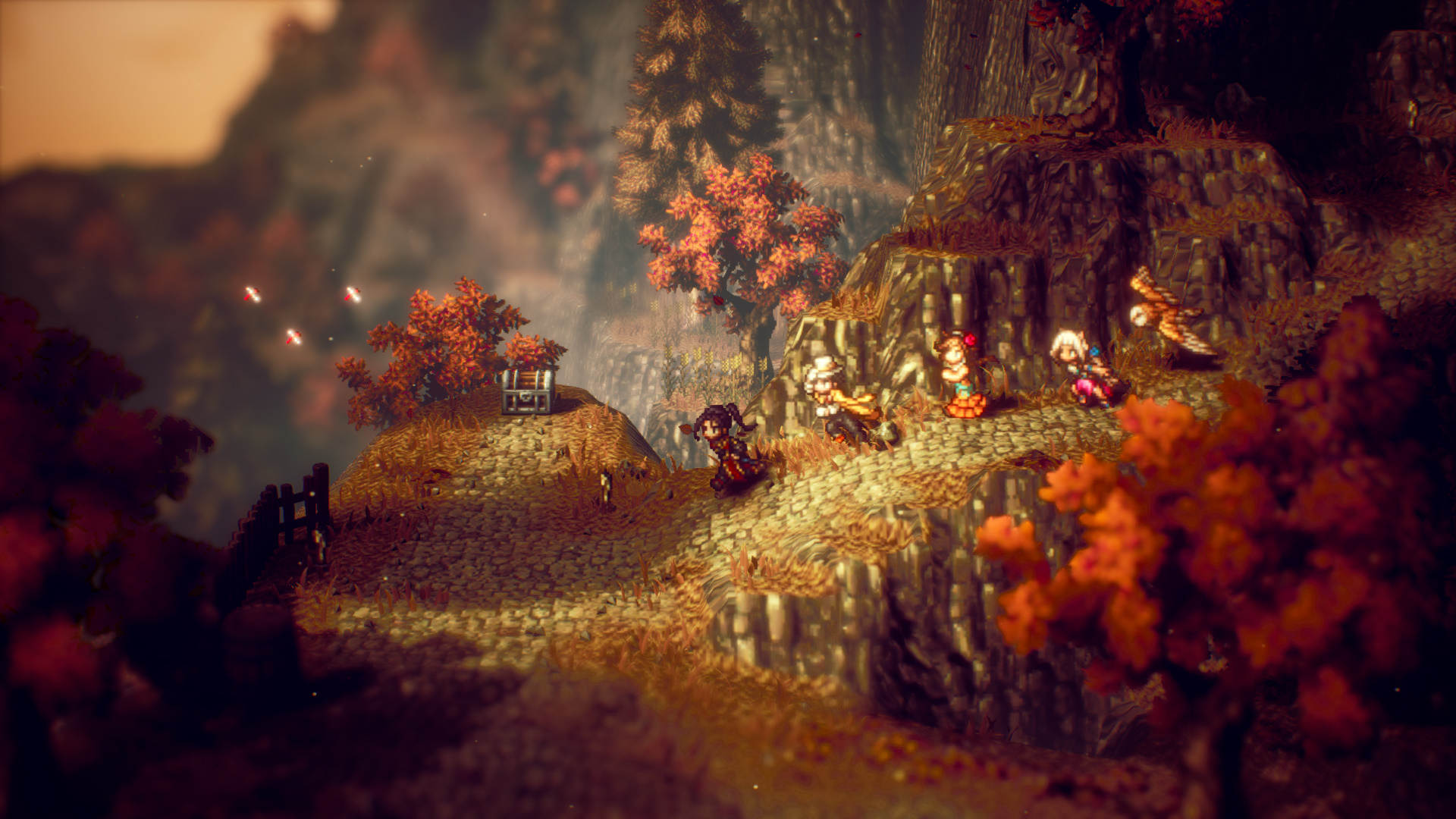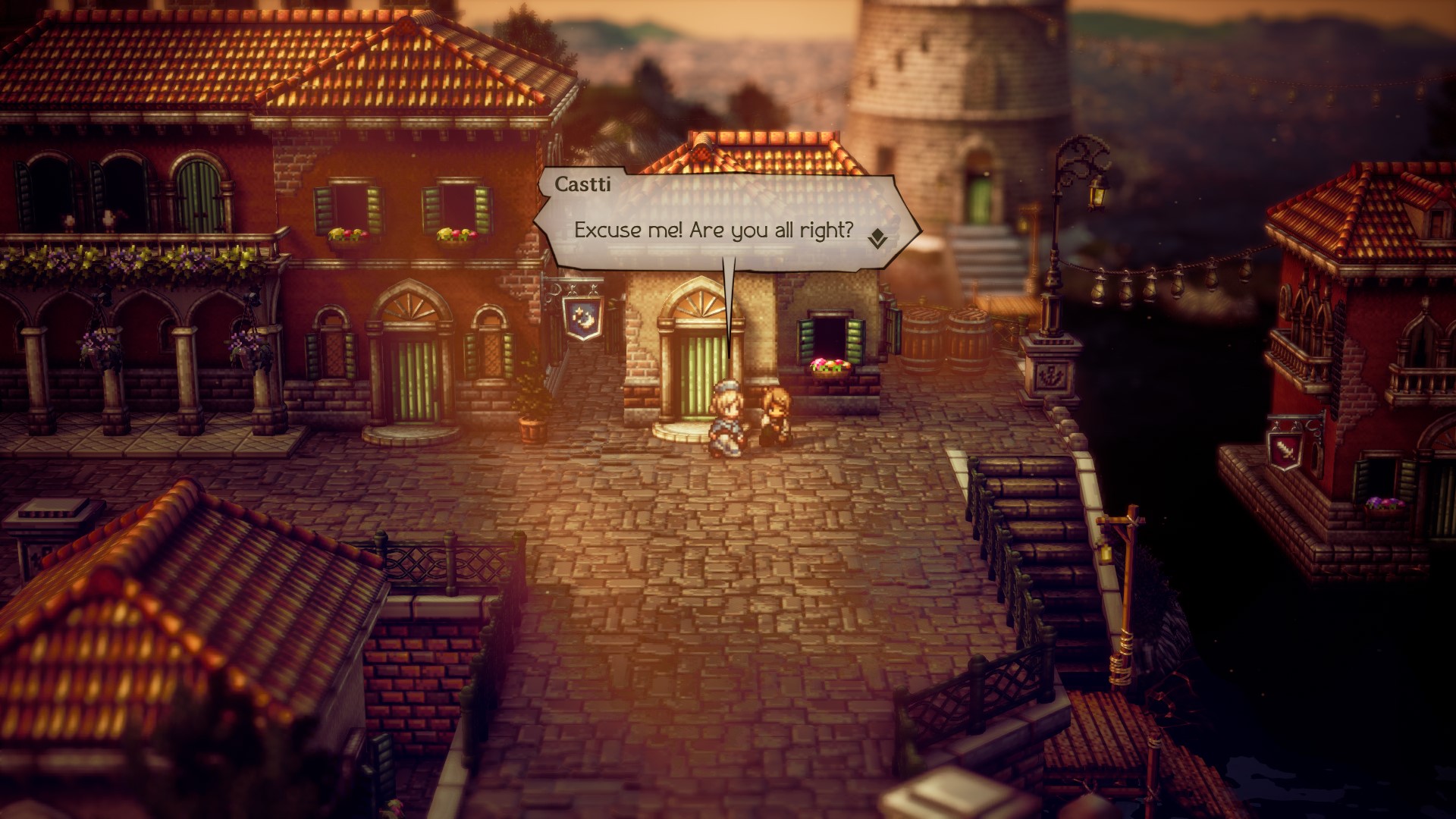TechRadar Verdict
A flawed gem of a JRPG that sacrifices depth for breadth.
Pros
- +
Gorgeous pixel art graphics
- +
Stunning soundtrack
- +
Memorable cast of characters
Cons
- -
Bland battle system
- -
Characters rarely interact
- -
Disjointed and jarring story
Why you can trust TechRadar
The bustling streets of New Delsta hide a dark secret. Organized crime has a vice-like grip on the city. From the shadows, the sinister Blacksnakes control everything.
Throné is an indentured servant to the Blacksnake’s grim hierarchs. Coerced into a life of crime, she faces abuse, corporal punishment, and danger on a regular basis. Part of a twisted power game played by the gang’s leaders, Throné is forced to fight her closest confidant to death. She triumphs, but something in her breaks. She resolves to escape the yoke of the Blacksnakes and find her freedom.
Enter: Agnea, a dancer from a pleasant village in the Leaflands. Wholesome, charming, and delightful, the aspiring starlet seems to have stepped out of a Disney movie. And here is Octopath Traveler 2’s biggest problem: many of its central stories are at complete thematic odds with each other.
Octopath Traveler 2 is a turn-based JRPG for the Nintendo Switch, boasting gorgeous pixel art graphics and a beautiful soundtrack by composer Yasunori Nishiki. From RPG veteran Square Enix, Octopath Traveler 2 isn’t explicitly a narrative sequel to its predecessor but does attempt to build on the themes and gameplay beats of the original. As with the last game, it follows the story of eight diverse heroes.
This makes for an overcrowded stage. Both Agnea and Throné’s stories could form the solid foundation of a JRPG in their own right. However, both tales are weakened when placed side by side in this jarring fashion.
No small parts

Octopath Traveler 2’s combat system initially appears to be the stuff of classic JRPGs. You have four fighters in your party, and you square off against your foes, politely taking turns to act. But Square Enix offers two twists on the traditional formula: the Boost and Break mechanics.
Every turn, each character accumulates a Boost Point which you can spend to power up actions, such as spells or melee attacks. It adds a sophisticated layer to the Octopath Traveller 2’s action economy.
Sign up for breaking news, reviews, opinion, top tech deals, and more.
Break is all about your enemies’ defenses. Every foe in Octopath 2 boasts weaknesses to specific damage types which you work out through trial and error, or your investigative skills. Every enemy also has a shield value. Each time you hit a foe with a weakness, its shield value decreases. Get this number to zero, and it’ll enter a vulnerable state, taking extra damage and skipping its next action.

Unfortunately, these mechanics exist in the shadow of other titles which implement similar features more fluidly. I couldn’t help but compare the Break mechanic to the elemental weaknesses in Persona 5, where, if you hit every enemy monster in an encounter with its weakness, you can perform a stylish all-out attack. You’re even rewarded with a personalized victory screen, depending on the character that initiated the move.
In contrast, Octopath 2’s Break system seems underwhelming. While it is satisfying to render an enemy vulnerable, the payoff is fleeting. With more formidable adversaries, the slog to inflicting the Break status often feels like a chore.
Talk of the town

Square Enix attempts to address a major problem with Octopath Traveler 2’s predecessor: namely, that the eight central characters barely interacted with one another. To remedy this issue, Octopath 2 includes special Cross Story chapters and Travel Banter.
Travel Banter does shine a light on inter-party dynamics in a pleasing way. However, the conversations often have little to do with the overarching character storylines. Like many of Octopath 2’s features, they are perfectly serviceable alone, but, in the context of the wider beast, they feel forced.
For the most part, our heroes are like allies of convenience, drawn together only to make pursuing their individual goals easier, which isn’t enough in light of the warm and inviting ensemble storytelling of the likes of Xenoblade Chronicles 3 and Bravely Default 2.
Party conversations often have little to do with the overarching character storylines.
Octopath Traveler 2 has breathtaking visuals, a gorgeous score, and a decent, if sometimes underwhelming, combat system. However, the game feels like it is being pulled apart in eight directions, only held together by narrative conceit and mechanical convenience.
That is not to say that there is nothing to love in Octopath Traveler 2. The individual character stories are well-written and often engaging, but in demanding you arbitrarily divide your time between tales, you're forced to yo-yo back and forth from one saga to the next inviting all the tonal whiplash you might expect.
Octopath 2 is a competent RPG, but fails to realize its loftier ambitions.

An editor and freelance journalist, Cat Bussell has been writing about video games for more than four years and, frankly, she’s developed a taste for it. As seen on TechRadar, Technopedia, The Gamer, Wargamer, and SUPERJUMP, Cat’s reviews, features, and guides are lovingly curated for your reading pleasure.
A Cambridge graduate, recovering bartender, and Cloud Strife enjoyer, Cat’s foremost mission is to bring you the best coverage she can, whether that’s through helpful guides, even-handed reviews, or thought-provoking features. She’s interviewed indie darlings, triple-A greats, and legendary voice actors, all to help you get closer to the action. When she’s not writing, Cat can be found sticking her neck into a fresh RPG or running yet another Dungeons & Dragons game.
